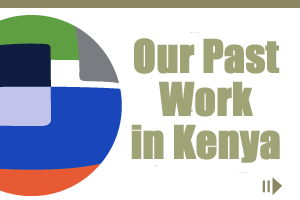In an era where breaking news increasingly falls within the domain of citizen-driven social media, data journalism levels the playing field for professional journalists. Rather than compete with information that is often a dime a dozen, journalists can tap into the growing demand for in-depth, evidence-based content and analysis that is not readily available, and for which people are willing to pay.
In Kenya, Internews’ data journalism project and its Data Dredger public accountability and journalism tool provide journalists the media skills they need to thrive in the digital age, and give them the edge to help shape the future of the media and their society. The two-year old Kenya Open Data Initiative (KODI) is one such data platform that provides a wealth of information from government departments and other open sources. The challenge is for journalists to use the data effectively to capture, analyze, visualize and explain the political, economic and social forces that shape people’s day-to-day lives.
“There is a lot of health data available on KODI,” said Internews in Kenya’s country director, Ida Jooste, explaining that it makes it very relevant in training journalists. In an interview with O’Reilly Media editor, Andy Oram during the “StrataX – Data makes a difference” in Boston in September 2013, she described how using the different data sets available on the site has helped journalists not only build hypotheses, but also come to new conclusions in their stories. “One example is the data sets related to schools and sanitation, and girls’ attendance records, which indicate that if schools don’t have toilets, girls are more likely not to go to school or drop out.” She cautioned however that this is only a hypothesis that needs to be checked in the field and with experts.
Jooste showcased Internews’ data journalism project that helps journalists create evidence-based media stories at the StrataX conference. “Internews Politics of Health project is a clear example of how journalists can use data to tell stories that hold politicians to account. Data enabled the team to provide a reality check to the ambitious claims political parties had made in their election manifestoes. For example, if a party promised that it would establish referral hospitals in each of Kenya’s 47 new counties, budgeting data would make it evident that the costs were prohibitive, and that the promise was not achievable.”
Jooste also presented the social and health-related context within which Big Data impacts societies in sub-Saharan Africa. The “StrataX – Data makes a difference” conference brought together change makers in big data, health care and health data science and communications together in Boston in the USA. Jooste’s interview can be viewed in full at: http://www.youtube.com/watch?v=3Kz2R3gKs7Q&list=SP055Epbe6d5atO1PI2yT3sxodTvsvmsce&index=39
For more on Internews’ data journalism project and its “Data Dredger tool”, visit: https://internewske.org/dataportal/

